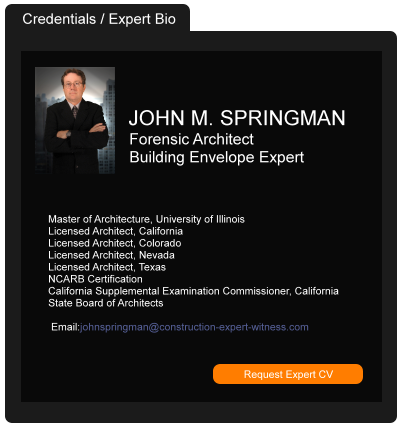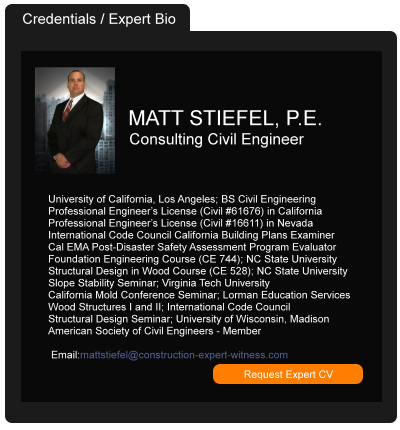Federal Regulatory Recap: A Summary of Recent Rulemaking Actions Taken or Proposed Affecting the Energy Industry
December 16, 2023 —
Anthony B. Cavender - Gravel2Gavel Construction & Real Estate Law BlogIt is clear that these have been busy months for federal environmental regulators, especially those working at EPA, the federal departments and the Council on Environmental Quality. Even the Department of Agriculture has found itself coping with greenhouse gases (GHG) issues in its administration of the laws applicable to agriculture and the national forests. The ambitious scope of the current “all of government” approach may be discerned after learning how many disparate federal agencies are employed in implementing this policy. So many actions have been proposed or completed that some state officials are experiencing “comment fatigue” because they are being overwhelmed by the scope, size, and complexity of these federal initiatives. The Environmental Protection Agency is, of course, at the forefront of these actions and activities, as described below.
Read the court decisionRead the full story...Reprinted courtesy of
Anthony B. Cavender, PillsburyMr. Cavender may be contacted at
anthony.cavender@pillsburylaw.com
Ongoing Operations Exclusion Bars Coverage
December 09, 2019 —
Tred R. Eyerly - Insurance Law HawaiiThe insurer denied the insured contractor's claim seeking a defense for faulty workmanship based upon the ongoing operations exclusion. PJR Constr. of N.J. v. Valley Forge Ins. Co., 2019 U.S. Dist. LEXIS 127973 (D. N. J. July 31, 2019).
PJR Construction was the general contractor to build a swim club and pavilion building for Cambridge Real Property, LLC. PJR began construction on May 29, 2012, and was to complete the construction by March 1, 2013. The project took much longer than anticipated. PJR was denied access to the site on November 13, 2014. Cambridge contended PJR tolerated shoddy workmanship and breached the terms of the contract documents. Cambridge estimated that the project was between 55% and 74.3% complete.
PJR and Cambridge went to arbitration. PJR sought a defense from the insurers. Coverage was denied based upon exclusions j (5) and j (6). Exclusion j (5), which the court referred to as the "Ongoing Operations Exclusion," provided the policy did not apply to,
Property Damage to . . . [t]hat particular part of real property on which you or any contractors or subcontractors working directly or indirectly on your behalf are performing operations, if the property damage arises out of those operations.
Read the court decisionRead the full story...Reprinted courtesy of
Tred R. Eyerly, Damon Key Leong Kupchak HastertMr. Eyerly may be contacted at
te@hawaiilawyer.com
Nevada Senate Bill 435 is Now in Effect
February 24, 2020 —
Bremer Whyte Brown & O'Meara LLPATTENTION: Nevada liability departments and auto insurance carriers! Nevada Senate Bill No. 435 was recently signed into law and there are two key points to be aware of: Disclosure of Policy Limits Demand and Voiding Releases. These both deal with pre-litigation situations.
1) Nevada law now requires a motor vehicle insurer to disclose the limits of the policy if the claimant provides a HIPAA authorization which allows the carrier to “receive all medical reports, records and bills related to the claim from the providers of health care.” This is a change from the previous Nevada statute which required the disclosure of policy limits only after litigation was commenced.
However, it appears from the language of the statute that there are limits to this new mandate. Section 4 of the new law is written in such a way to allow the argument that the new law applies only to accidents that occurred after 10/1/19, and that the insurance company has to request the HIPAA waiver from the claimant in order for the disclosure requirement to apply.
The plaintiff’s bar is already attempting to address this language in the legislature. As written, subsection (4) is governed by subsection (1) which states that the insurance company “may require the claimant … to provide … a written authorization.” The following subparts all appear to be triggered only by the act of the insurance company requesting a HIPAA waiver. The plaintiff’s bar is pushing for clarifying language that would make it clear that once the claimant sent a HIPAA waiver, irrespective of whether the document was requested by the insurance company or not, the insurance company is required to disclose policy limits. This is not how the law reads on its face, and the change would make a significant difference from a practical perspective.
Read the court decisionRead the full story...Reprinted courtesy of
Bremer Whyte Brown & O'Meara LLP
A Quick Checklist for Subcontractors
January 26, 2017 —
Christopher G. Hill – Construction Law MusingsAfter the last two weeks’ analyses of a couple of big construction decisions that came out recently, I thought I’d keep this week’s post practical and short for those that are not construction lawyers. So without further ado, here is a short checklist of the top things (aside from calling their local experienced construction attorney) a construction subcontractor should do or look for when reviewing a construction contract from a general contractor (and for a couple of these that a general contractor can look for in its prime contract).
- ALWAYS get a copy of the Prime Contract between the Owner and the General Contractor. This contract will contain terms that will “flow down” to you through the incorporation clause that almost every subcontract contains. You can’t do much to change these terms, but you will need to know them as the job progresses.
- READ every provision of the subcontract. I know this sounds simple, but not all subcontracts hide the red flags in the same places. Remember the details of a subcontract can sink you later if you aren’t prepared.
Read the court decisionRead the full story...Reprinted courtesy of
Christopher G. Hill, The Law Office of Christopher G. HillMr. Hill may be contacted at
chrisghill@constructionlawva.com
New York Shuts Down Majority of Construction
March 30, 2020 —
Laura Bourgeois LoBue & Matthew D. Stockwell - Gravel2Gavel Construction & Real Estate Law BlogDue to pressure from construction workers, officials, and some construction workers having tested positive for COVID-19, the Empire State Development Corp. (acting on behalf of Governor Cuomo) has frozen all construction in New York today, with the exception of work on hospitals and health care facilities, transit facilities, roads and bridges, affordable housing and homeless shelters.
As a result, commercial construction and condominium projects are on hold, with the exception of work that must be completed to prevent unsafe conditions. Until now, construction has been considered “essential” in New York.
Reprinted courtesy of
Laura Bourgeois LoBue, Pillsbury and
Matthew D. Stockwell, Pillsbury
Ms. LoBue may be contacted at laura.lobue@pillsburylaw.com
Mr. Stockwell may be contacted at matthew.stockwell@pillsburylaw.com
Read the court decisionRead the full story...Reprinted courtesy of
A Survey of New Texas Environmental Laws
December 30, 2019 —
Anthony B. Cavender - Gravel2GavelThis is a brief survey of many of the environmental and regulatory laws passed by the Texas Legislature and signed by the Governor in the 86th Regular Session of the Legislature, which ended in May 2019. Altogether, more than 1,300 laws were enacted in this session, including a surprising number of environmentally related bills. Most of these new laws take effect on September 1, 2019. This survey places them in the following broad categories: Air, Water; Waste; Disaster (principally because of the effects of Hurricane Harvey); and Miscellaneous.
(Special thanks to Jay Bowlby, a summer intern in our Houston office, who made a significant contribution to this survey.)
1.
Air
HB 1627—amends Section 386.001(2) of the Health and Safety Code to remove several counties from the list of counties with deteriorating air quality subject to the Texas Emissions Reductions Plan.
HB 1346—relates to the diesel emissions reductions incentives and gives the TCEQ flexibility in administering this program.
HB 2726—concerns amended air quality permit applications. The law provides that construction of a project may proceed, at the applicant’s own risk, after the TCEQ Executive Director has issued a draft permit including the permit amendment. However, this provision does not apply to a permit amendment affecting a concrete batch plant located within 888 yards of a residence.
HB 3725—creates the Texas Emissions Reduction Plan Trust Fund, which will be held by the Comptroller and administered by the TCEQ, which also administers the TERP program.
SB 698—authorizes the TCEQ to provide expedited processing of certain Texas Clean Air Act permit applications by increasing the agency’s permitting staff.
Read the court decisionRead the full story...Reprinted courtesy of
Anthony B. Cavender, PillsburyMr. Cavender may be contacted at
anthony.cavender@pillsburylaw.com
It’s a Bird, It’s a Plane . . . No, It’s a Drone. Long Awaited FAA Drone Regulations Finally Take Flight
September 22, 2016 —
Garret Murai – California Construction Law BlogIt’s a bird.
It’s a plane.
No, it’s a drone. Also known as an unmanned aerial vehicle (UAV) or unmanned aircraft (UA).
And, technically, they’ve been around a long time, since at least 1849 when the Australians attacked Italy with unmanned balloons loaded with explosives. Even a young Marilyn Monroe, when she was known simply as “Norma Jean,” worked at a company called Radioplane making unmanned aircrafts during World War II.
Since then, as technology has advanced, which, in turn, has made the cost of older technology go down, what was once old, is now new again. Drones are making regular appearances in the movies (think the Divergent Series: Allegiant). The paparazzi (who are apparently tired of getting punched in the face) are using them. And some day, perhaps very soon, they may just be delivering your packages (think Amazon Prime Air).
One of the earliest adopters of drones outside the military, however, has been the construction industry which has used drones to track the progress of construction projects and conduct site surveys such as this one showing the progress of Apple’s new campus in Cupertino[.]
Read the court decisionRead the full story...Reprinted courtesy of
Garret Murai, Wendel, Rosen, Black & Dean LLPMr. Murai may be contacted at
gmurai@wendel.com
Real Estate & Construction News Round-Up (08/24/22) – Local Law 97, Clean Energy, and IRA Tax Credits
September 26, 2022 —
Pillsbury's Construction & Real Estate Law Team - Gravel2Gavel Construction & Real Estate Law BlogThis week’s round-up features the intersection of real estate and energy efficiency, including state efforts surrounding clean energy legislation, Inflation Reduction Act tax credits, hotel & hospitality sectors creating sustainable initiatives to reduce carbon emissions, and more.
- In New York City, building owners try to figure out how to pay for upgrades needed to comply with regulations outlined in Local Law 97 that are intended to fight climate change. (Jane Margolies, The New York Times)
- Maryland, Massachusetts, and New York approve clean energy legislation, enacting laws to promote electric vehicles as well as wind and solar energy. (ACEEE)
- The Inflation Reduction Act (IRA), signed into law by President Biden this week, includes expanded tax credits expected to pivot building owners and property developers to make upgrades geared towards energy efficiency. (Jack Rogers, Globe St.)
Read the court decisionRead the full story...Reprinted courtesy of
Pillsbury's Construction & Real Estate Law Team


































































